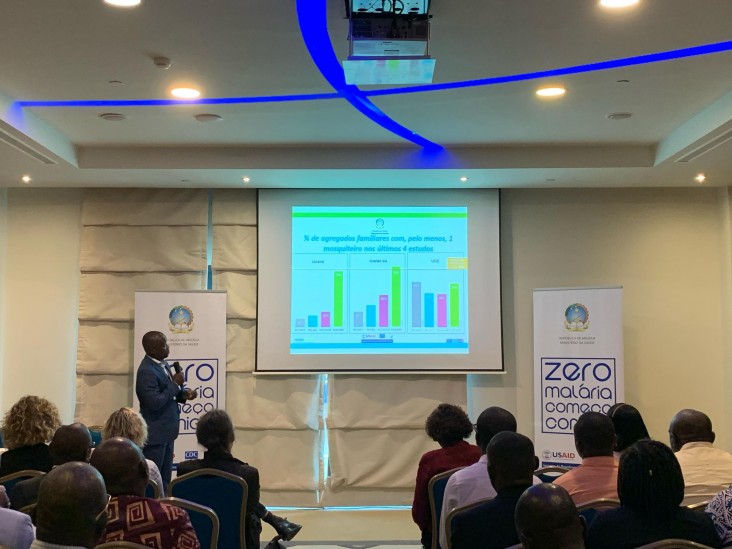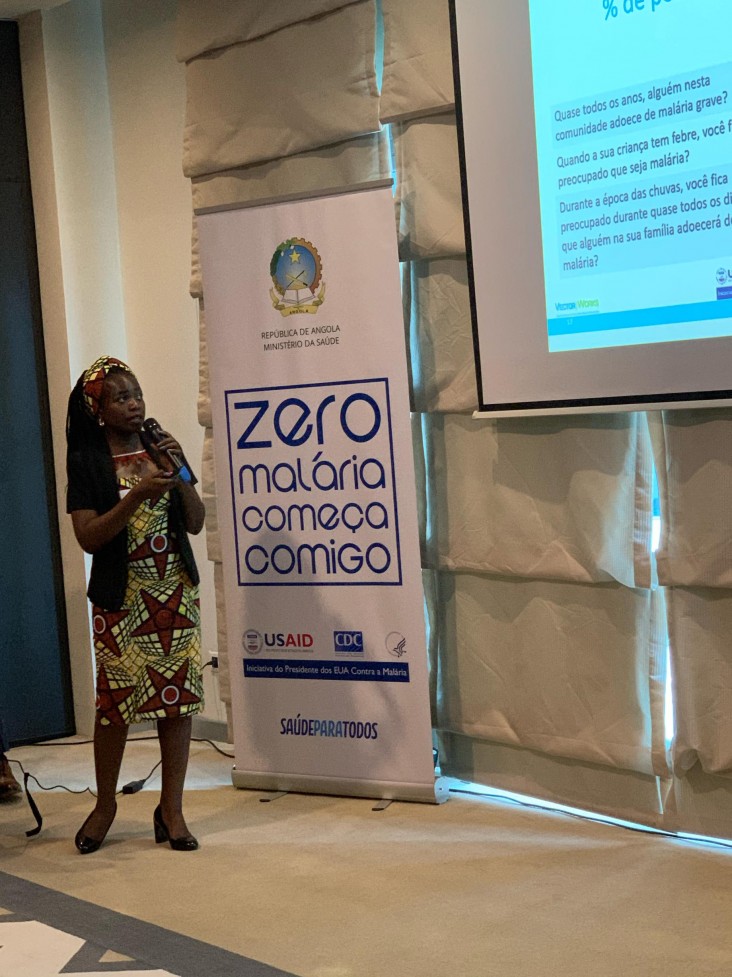Speeches Shim

The U. S. Agency for International Development (USAID) funded Health for All Project, in collaboration with the National Malaria Control Program (NMCP) and the U.S. Government’s President's Malaria Initiative (PMI), presented final results of the Quantitative and Qualitative Long Lasting Insecticide Treated Nets (LLINs) Care and Use Study. The event was held in Luanda on October 21.
Sixty participants attended from several institutions including the Ministry of Health’s NMCP, the Ministry of Social Communications, Ministry of Health representatives from target provinces, the World Health Organization, UNICEF, and malaria partner’s forum members Core Group, Exxon Mobil, UNITEL and others.
The main study objective was to understand attitudes and practices related to LLINs’ use and care, as well as identify barriers and facilitators for use of LLINs. The study also looked at attitudes and behaviors towards malaria after the 2017-2018 Universal Mosquito Net Mass Distribution Campaign when over 6, 3 million LLINs were distributed in 13 provinces supported by USAID through PMI and the Government of Angola.
Results are in line with previous studies that suggest LLIN ownership is a key determinant for use. It is also important to highlight that when compared with results from the last Angola Demographic Health Survey 2015-16, the study illustrates increases in all access and use indicators, reaching in some cases national targets established in the Strategic National Plan 2016-2020 (percentage of households with at least 1 LLIN reached the national target of 75%).
Results from the qualitative component showed that while participants in the study understood the risks of malaria in the community and the benefits of using LLINs, they were also afraid of allergic reactions produced by perceived excess of insecticides. Overall, findings from this study suggested that communication campaigns should promote the care of LLINs to reduce undesirable effects on people and prolong the life of LLINs.

Another take a way message was that distribution campaigns should aim at fully covering each province in short periods of time as opposed to conducting the campaigns in phases with long periods of time in between, which occurred in Uíge province.
At the end of the presentation, Dr. José Martins, NMCP Coordinator, reinforced the importance of this study to inform the upcoming NMCP communication plan that must be evidence based.
During the last 15 years PMI has supported the NMCP to increase effectiveness of social and behavior change activities to fight malaria, strengthen Ministry of Health systems related to stock management, build health worker skills in logistics management, and improve the efficiency of data collection, analysis and use.
Key access and use results from the quantitative survey
- 70% of households with at least one or more LLINs in Cunene province, 76% in Cuanza Sul province and 54% in Uíge province.
- The overall percentage of people with access to LLINs was 51% in Cunene, 55% in Cuanza Sul and 33% in Uíge province.
- The percentage of people among those with access who slept under an LLIN the previous night was relatively high: 69% in Cunene, 87% in Cuanza Sul and 72% in Uíge.
READ MORE
Related News
- As COVID-19 loomed, Angola conducted an essential on-line quantification exercise to support the HIV/AIDS program
- USAID’s Health for All project improves quality of care through HNQIS formative supervision
- USAID’s Health for All project continues to provide skills and tools to increase laboratory efficiency on malaria diagnosis in Angola

Comment
Make a general inquiry or suggest an improvement.